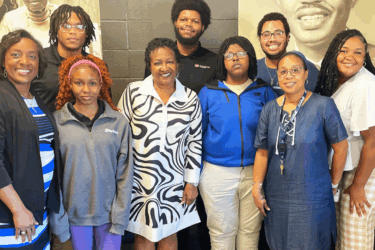If you were asked to close your eyes and picture the place where you feel most safe and secure, most likely you would imagine your own home. As parents, we have measures in place; like teaching our children to lock the doors, to never open them to strangers, and to have a plan in case of a fire. These measures are most likely second nature, yet their combined efforts are what makes our home feel like a safe-haven. But what about school safety? Have we put the same amount of effort and thought into the place where our children probably spend the most time, other than at home?
Know your school’s safety procedures. Every school has policies and procedures on security and emergency preparedness. Each school’s procedures may be slightly different so it is important for you to know your school’s safety plan. Gwynn Shamlin, East Baton Rouge Parish I CARE Program Director says, “The East Baton Rouge Parish School System publishes an annual Student Handbook, as does each individual school. The handbooks make recommendations to parents regarding safety, including bus, Internet, and school safety suggestions.” Take a moment to review your school’s procedures in the handbook or with administration, and if you find an area of safety that you feel might be lacking, address the issue with your child’s school.
Communicate with teachers and faculty. All schools should have a staff that has been trained on what to do in a variety of emergency situations, but keep in mind that you are still the best advocate for your child. Ask your child’s teacher or administrators what plans they have in place for emergencies such as fires, hurricanes, intruders, or other safety threats to your child’s school. Keep in mind that some safety drills may be intentionally unannounced.
Communicate with your child. Ask your child questions about school safety. Is there any area in their school where they do not feel safe? Do they know what to do in case of emergency? Do they have a trusted adult who they feel comfortable talking to in any emergency? Louisiana’s Department of Homeland Security encourages the community to report suspicious activity with the concept of “If you see something, say something.” For East Baton Rouge Parish schools, Shamlin says their I CARE Program’s “Be the One” curriculum enforces this idea. Trained specialists, teachers, and counselors teach the “Be the One” curriculum encouraging children to be aware of their surroundings and to “be the one” to notify a teacher if something seems amiss. Discuss this idea with your child and ensure that he has a trusted adult at school who he feels comfortable talking to in any emergency.
Know how emergencies will be communicated to you. Most schools have a school-wide alert system of some kind, and often the communication comes from multiple sources. In an emergency situation, your school may make phone calls, send emails or text alerts, or use social media to get the word out. For East Baton Rouge Parish schools, Shamlin says their system-wide phone alert system, J-Campus, can contact parents via home phone and cell phone to relay urgent safety messages in a timely manner. If you were to take only one step for school safety, let it be this: take a few minutes to check with your child’s school and be sure you are set up to receive all emergency alerts by whichever method is offered at your school.
Do your part. Maintain a partnership addressing and understanding school safety. Do your part by knowing and respecting your school’s safety procedures. For example, do you follow all school safety procedures such as checking in to receive a visitor identification badge or parking in designated areas? Keep in mind that sometimes doing your part may also mean letting your school’s administration do theirs. Once you know that your school has emergency procedures in place, don’t waste valuable time making multiple calls or visits to the school during a potential crisis situation. Trust the administration to implement the plans they have in place to keep your children safe at school. ■





